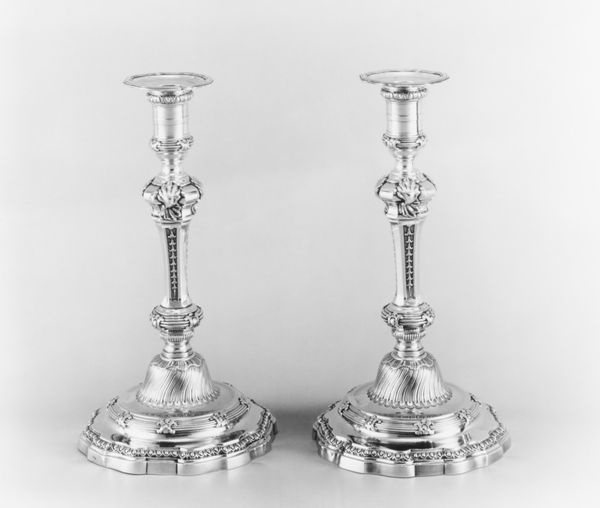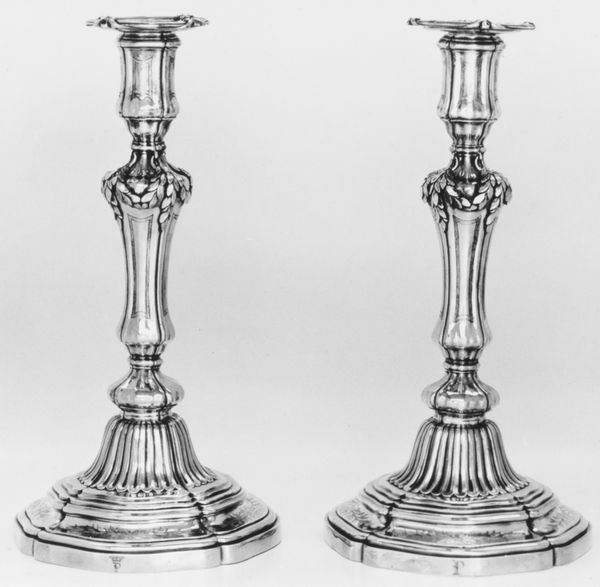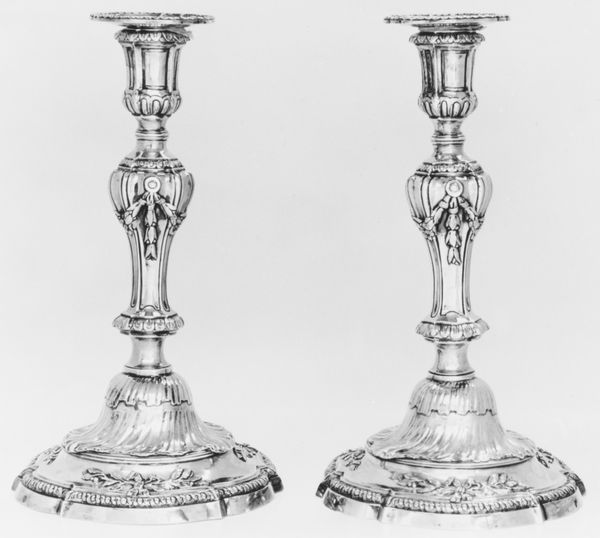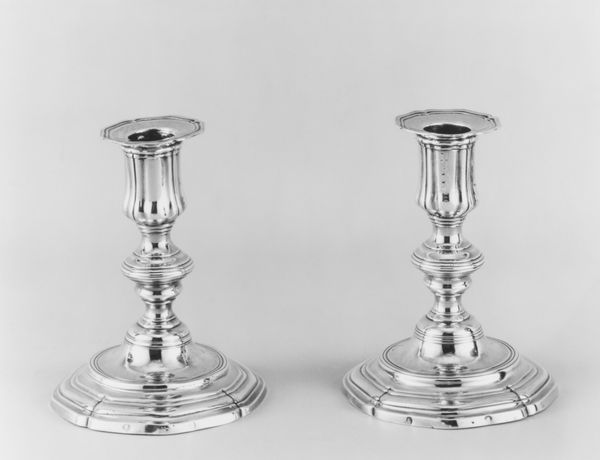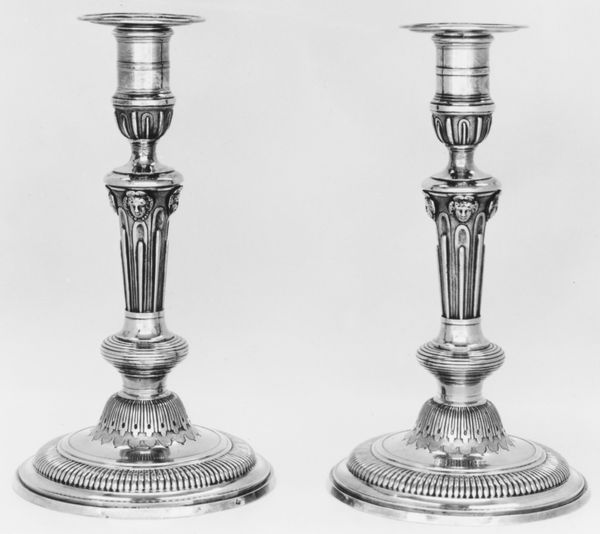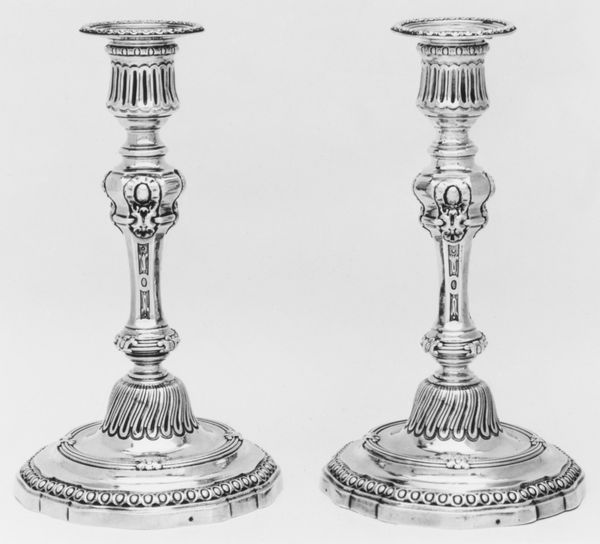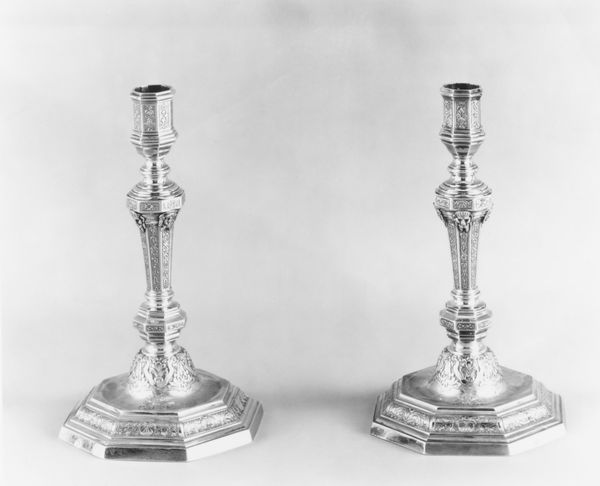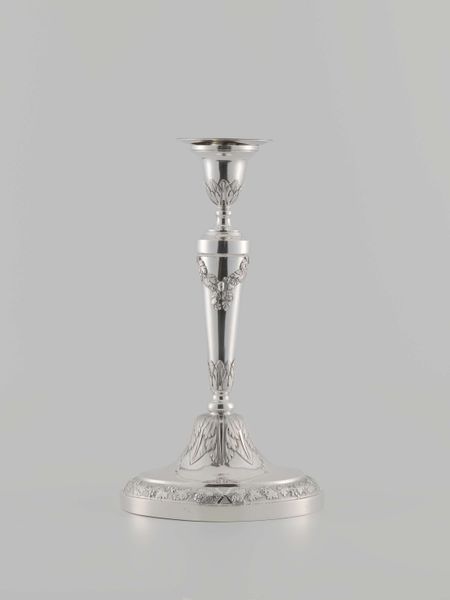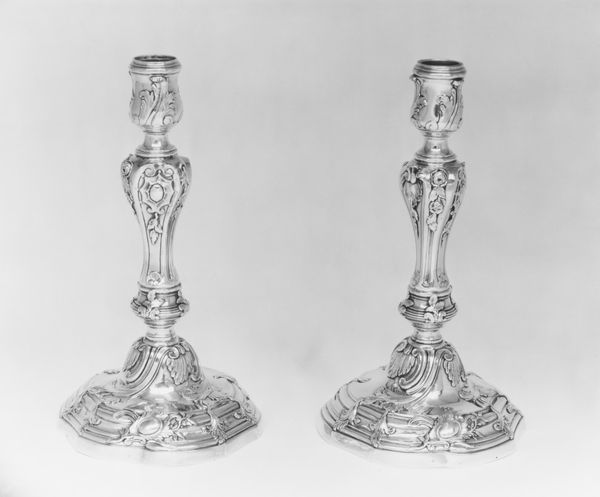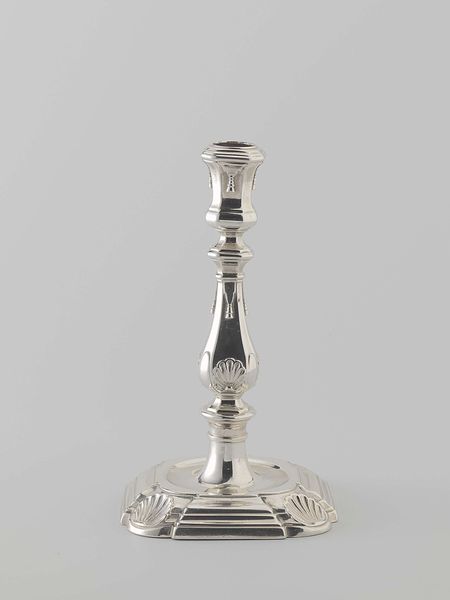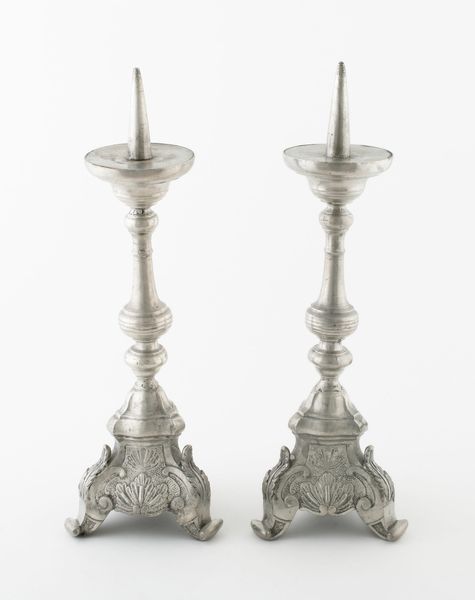
silver, metal, sculpture
#
silver
#
baroque
#
metal
#
sculpture
Dimensions: Overall (each): 10 1/4 × 5 1/2 in. (26 × 14 cm)
Copyright: Public Domain
Curator: Here we have a pair of silver candlesticks crafted by Michel II Delapierre, dating back to 1756-1757. You can find these elegant objects right here at the Metropolitan Museum of Art. Editor: Immediately, I'm struck by their reflective surfaces. They seem almost like frozen light, incredibly tactile, I wonder about the labor involved in creating this texture in metal? Curator: Well, the Baroque period, during which these candlesticks were made, placed significant emphasis on ornate decoration, and they were clearly intended for an elite clientele. Delapierre was one of the skilled silversmiths catering to that market. Their role wasn't merely functional. Editor: Exactly. They speak to the means of production, don't they? Consider the workshops, the specific tools. You get a real sense of the relationship between artist, patron, and object. This high-end craft production reflects power relations in society. Curator: Absolutely. Silver as a material signaled wealth, and having these candlesticks prominently displayed announced a certain social standing. It's interesting how the cultural elite used art to project an image. Editor: And how different is this form of craftsmanship, focusing solely on appearance and elite sensibilities, from, say, domestic candle-making or other kinds of more widely available lighting alternatives during that era? Curator: Good question. The artistry is, in many ways, tied up in the power structures of the time. And to possess such objects wasn't just about utility; it was about reinforcing status and cultural norms through patronage of certain artistic circles. Editor: Looking closely, the ornamentation suggests floral motifs. The hand that shaped this material clearly cared about detail. You wonder about their daily work. Also, the repeated production of identical pairs seems like an early form of mechanization, with associated pressures of that process. Curator: An interesting angle. While still handmade, they would have likely worked to models and efficiencies, as part of a system. Thanks, this sheds light on new considerations! Editor: Indeed! Considering them as material objects deepens their meaning within a given social setting.
Comments
No comments
Be the first to comment and join the conversation on the ultimate creative platform.
